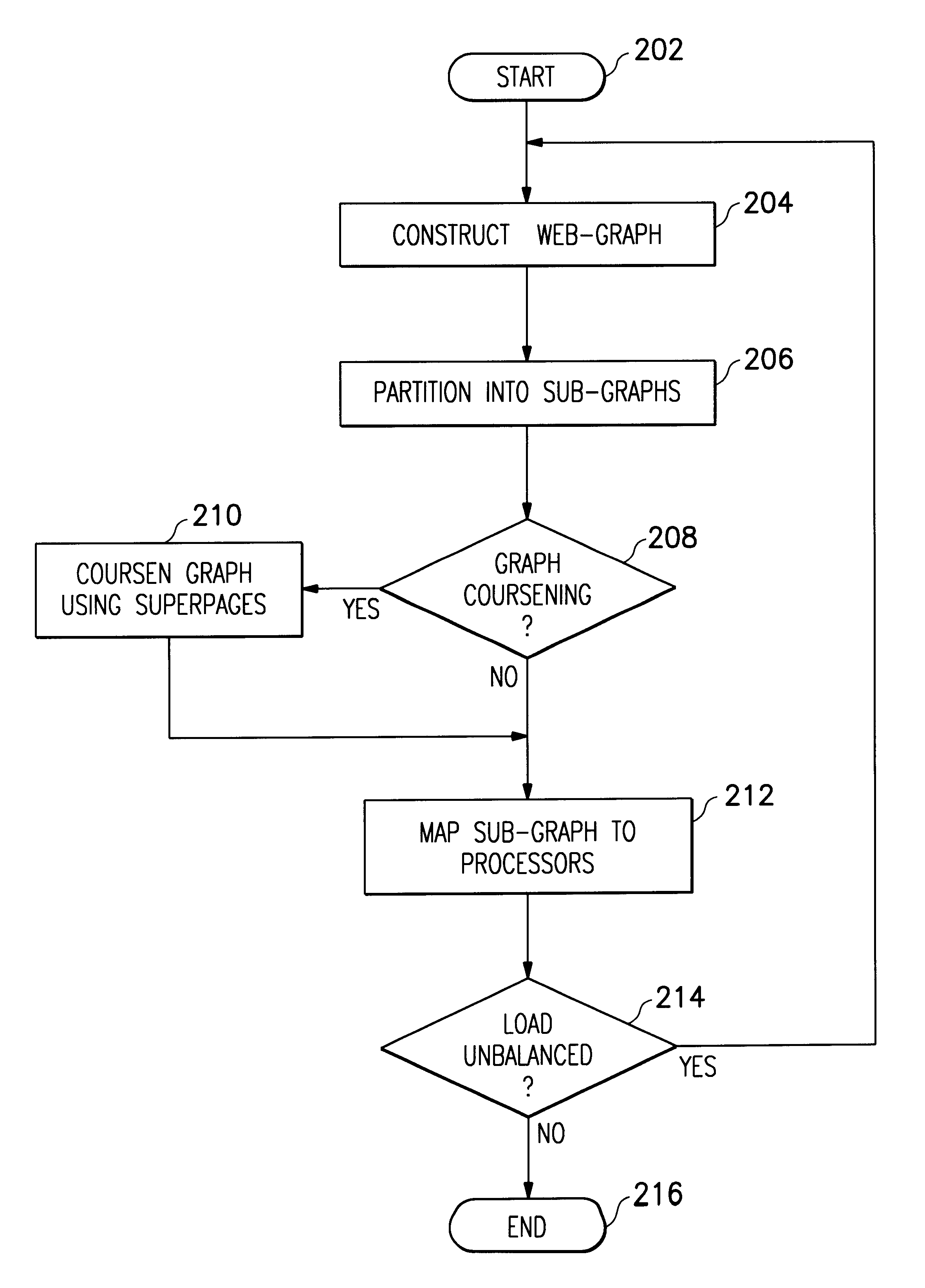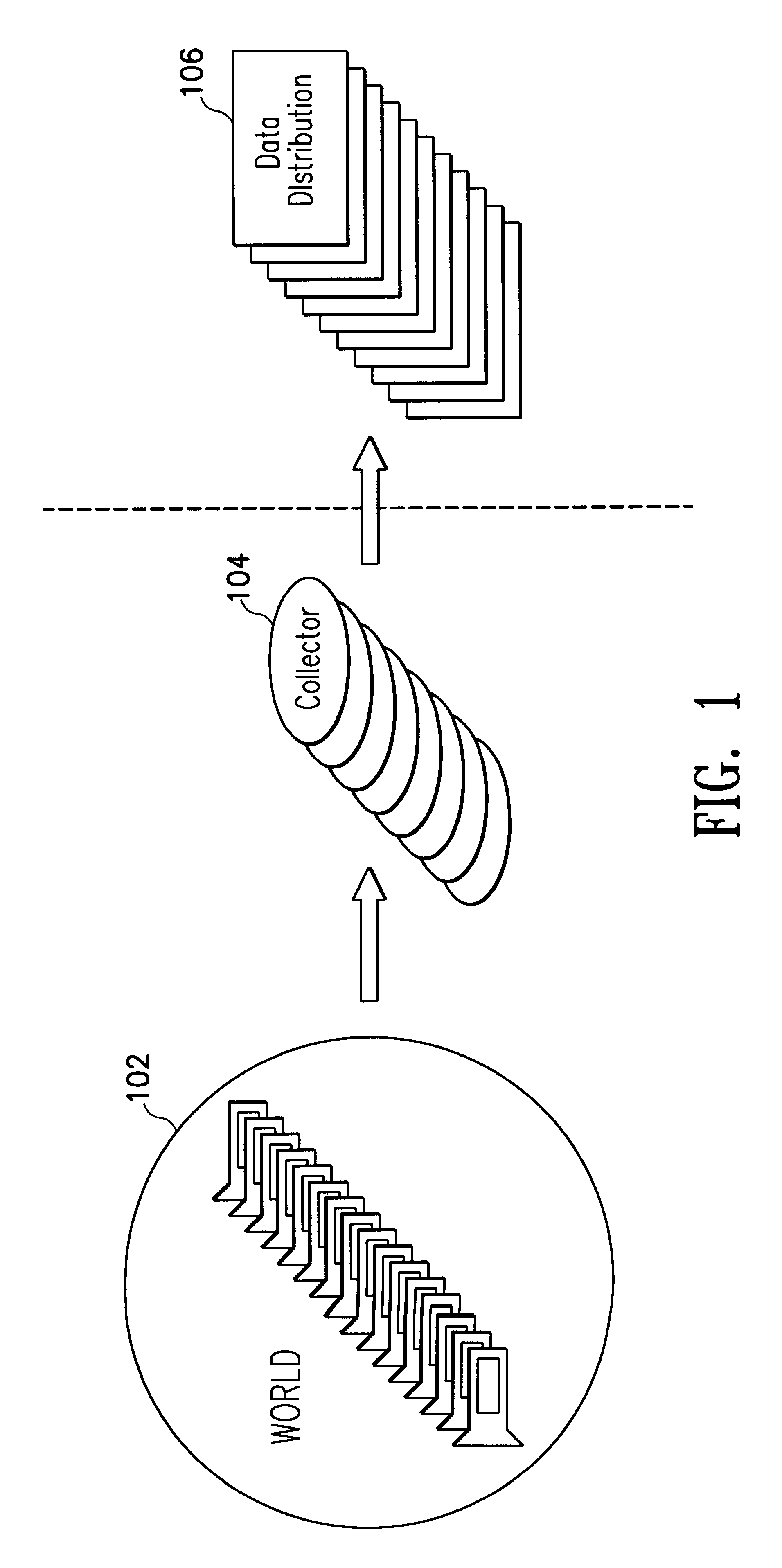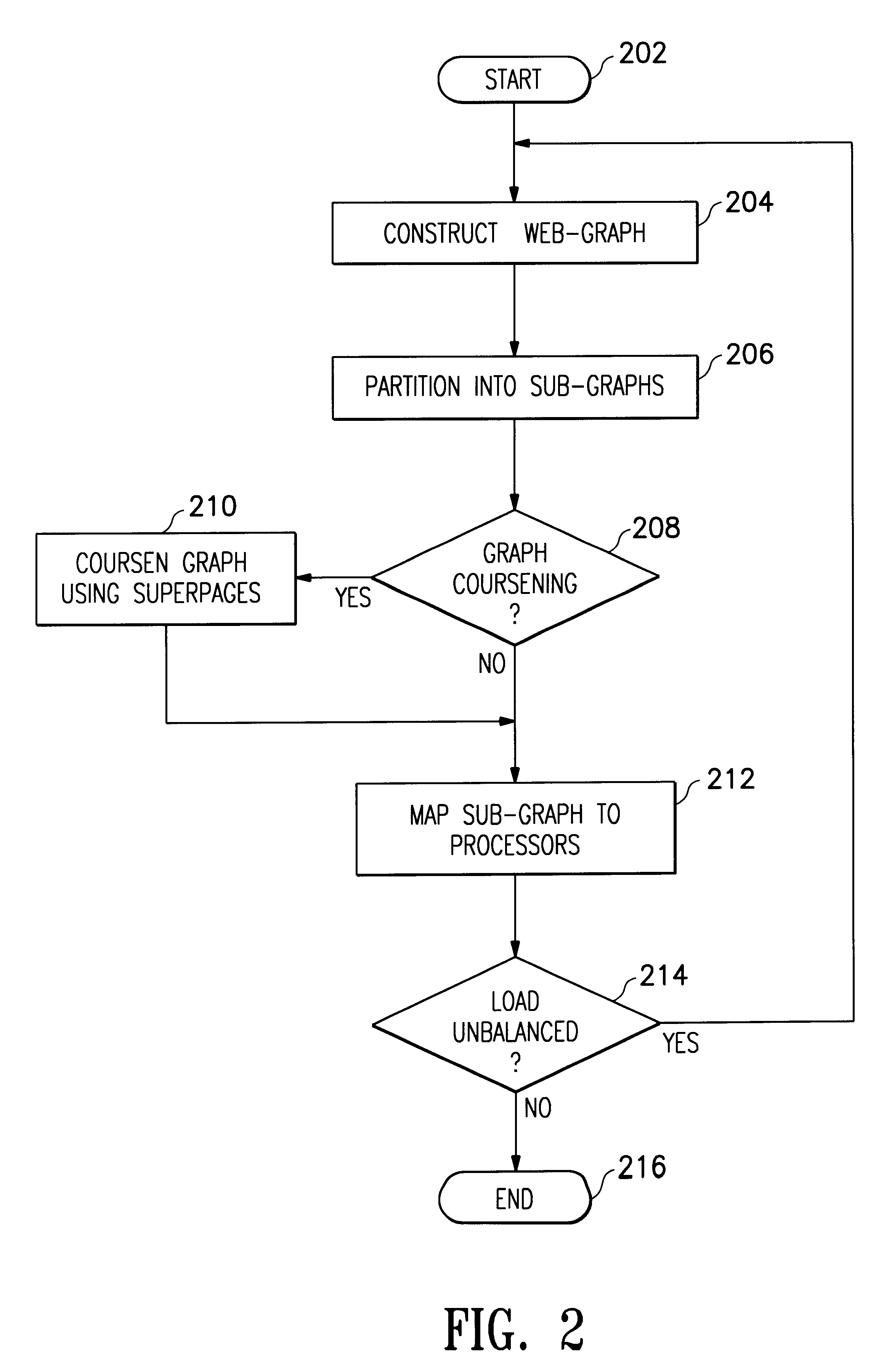Collaborative team crawling:Large scale information gathering over the internet
a collaborative web and information gathering technology, applied in the field of collaborative web crawling and information processing, can solve the problems of requiring a considerable amount of time for the gatherer to process information, a large amount of communication overhead in parallel crawling, and a large amount of review graphs. the effect of reducing the amount of communication overhead and minimizing the computation overhead of the processor
- Summary
- Abstract
- Description
- Claims
- Application Information
AI Technical Summary
Benefits of technology
Problems solved by technology
Method used
Image
Examples
Embodiment Construction
One aspect of the invention concerns a method for collaborative information gathering in a digital domain such as an intranet or an Internet. Generally, gathering as shown in FIG. 1 retrieves objects and commands stored throughout a linked net such as a World 102, collects the information using a collection method executed by a collector such as Collector 104, and distributes the objects and commands to users who have requested the information, represented by Data Distribution 106.
One embodiment of one method performed during gathering, also referred to as collaborative crawling or team crawling throughout this application, is shown in FIG. 2. The method begins in task 202 and a web-graph is constructed in task 204. This web-graph is a hierarchial logical structure representing various relationships between information contained within the graph. This information is defined by the scope of the search requested. The web-graph may be partitioned into sub-graphs in task 206 for various...
PUM
 Login to View More
Login to View More Abstract
Description
Claims
Application Information
 Login to View More
Login to View More - R&D
- Intellectual Property
- Life Sciences
- Materials
- Tech Scout
- Unparalleled Data Quality
- Higher Quality Content
- 60% Fewer Hallucinations
Browse by: Latest US Patents, China's latest patents, Technical Efficacy Thesaurus, Application Domain, Technology Topic, Popular Technical Reports.
© 2025 PatSnap. All rights reserved.Legal|Privacy policy|Modern Slavery Act Transparency Statement|Sitemap|About US| Contact US: help@patsnap.com



